Laser cutters are resourceful machines that can both cut and engrave – but not all lasers can cut all materials. While wood is an excellent material to learn laser skills, you may eventually want to move on to metal, acrylics, leather, and many other materials.
But what materials can your laser cut? And which materials can your laser engrave?
This article has the complete material list for laser cutters and engravers. For each material, we’ll explain whether you can cut it, what you need to cut it, and what you need to engrave it. We’ll also show what materials not to cut you don’t end up compromising your laser cutter safety.
The Full Laser Cutter Material List – The Materials You Can Laser Cut & Engrave:
- Wood
- Cardboard (and Carton)
- Paper and Card
- Glass
- Acrylic
- Leather
- Foam (PE, PUR, PES, PS, PP)
- Fabric (Cloth, Felt, Cotton)
- Rubber
- Plastics
- Steel
- Aluminum
- Other Metals: Gold, Silver, Bronze, Brass, Copper, Tungsten, Chrome, and Nickel
- Fiberglass
Materials You Can Laser Engrave But Not Cut
Which Materials Can Diode, CO2, and Fiber Lasers Cut?
- Fiber lasers are great for working with metals, wood, acrylic, and leather. Fiber lasers can also mark some plastics and metals. MOPA fiber lasers can color-mark some metals and plastics.
- CO2 lasers can cut wood, some plastics, glass, fabric, rubber, leather, and maybe fiberglass (we’ll explain later). Although CO2 lasers can’t cut metals, they can engrave a few.
- Diode lasers can’t cut or even engrave bare metals, but they can cut thin sheets of wood, acrylic, and leather.
All of these lasers can engrave more materials than they can cut. However, some lasers can cut a particular material, while they can’t engrave it. So, let’s investigate each material separately.
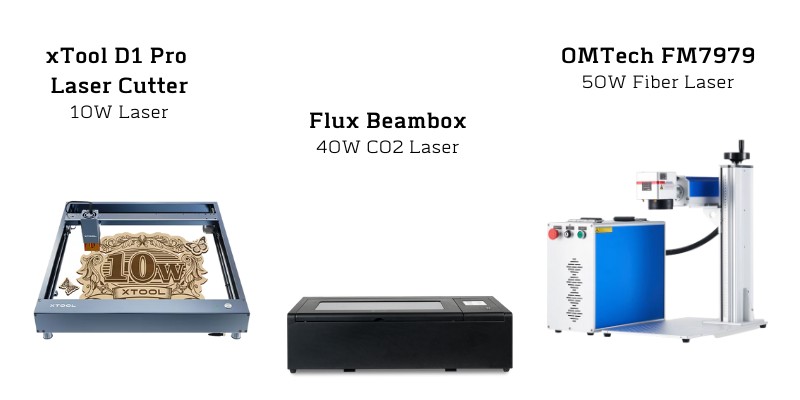
What Materials Can Diode Lasers Cut?
Diode lasers can cut wood (solid wood, plywood, MDF), cardboard, paper, carton, acrylic, and leather. However, diode lasers can only cut thin sheets of these materials (not, for example, 20mm thick solid wood).
What Materials Can CO2 Lasers Cut?
CO2 lasers can cut wood (solid wood, plywood, MDF), cardboard, paper, carton, plastics, glass, acrylic, leather, fabric, rubber, and foam. Some CO2 lasers can also cut fiberglass. We’ll explain which CO2 lasers can cut fiberglass and whether it’s safe.
What Materials Can Fiber Lasers Cut?
Fiber lasers can cut metal sheets like aluminum, stainless steel, carbon steel, titanium, brass, silver, bronze, gold, tungsten, chrome, and nickel. Fiber lasers can also cut wood (solid wood, plywood, MDF), acrylic, and leather.
The Complete Laser Cutter Material List
Wood
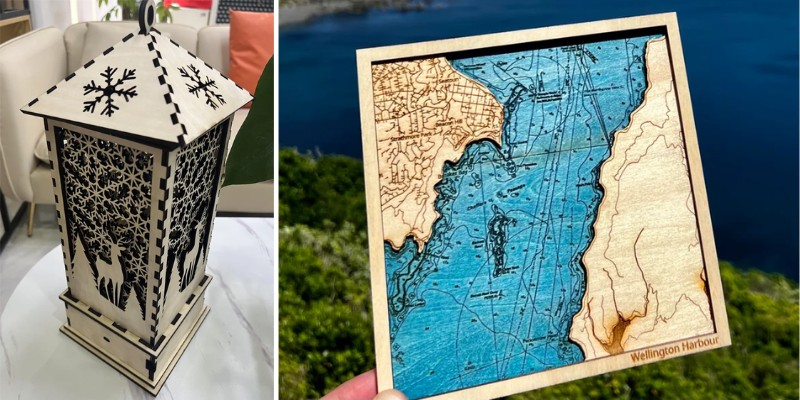
Wood is the most popular material for laser hobbyists since buying wood is easy, and all lasers can cut and engrave it. Plus, wood is available in various shapes (sheets and dowels) and various types (plywood, balsa, MDF, birch, and other types).
Can Lasers Cut Wood?
Yes, lasers can cut various types of wood like balsa, MDF, plywood, composite wood, and birch. However, some less powerful lasers can’t cut thick wood. Furthermore, cutting wood with resin or oil on its surface is dangerous since too much resin can cause fire during laser cutting.
Which Lasers Can Cut Wood?
Diode lasers, CO2 lasers, and fiber lasers can all cut wood. However, diode lasers can’t cut thick wood.
The maximum thickness depends on the wood, but diode lasers can typically cut up to about ¼” thick wood.
CO2 and fiber lasers can cut thicker wood depending on their power. A 90W CO2 laser can cut wood up to 20mm wood (about ¾” thick).
Can Wood Be Laser Engraved?
Wood can also be laser engraved. Diode lasers and CO2 lasers are excellent for engraving wood. However, fiber lasers aren’t good for laser engraving wood and give poor results. Check out our article on the best woods for laser engraving for more.
Tips and Tricks For Laser Cutting and Engraving Wood
MDF chars faster than solid wood, so you may see burnt edges when cutting MDF. Using air assist helps tremendously in reducing chars.
Plywood and other composite woods are more difficult to cut since they contain glue. The glue absorbs part of the laser power and lowers the cutting speed. But lasers can still cut composite wood efficiently.
Finally, be careful about cutting wood with a resinous surface. Too much resin on the surface increases the fire hazard. Also, using air assist helps prevent fires by blowing away debris that may catch flare-ups.
Cardboard (and Carton)
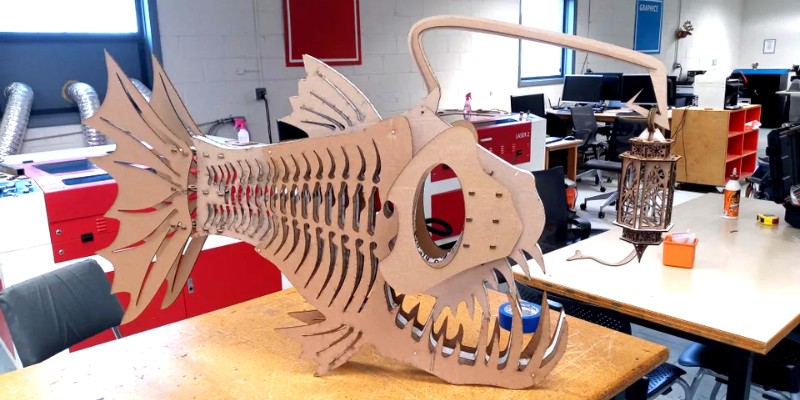
Can Lasers Cut Cardboard?
Yes, lasers can cut cardboard. However, you should be careful while laser cutting cardboard since it can catch fire.
Which Lasers Can Cut Cardboard?
Diode and CO2 lasers are excellent for cutting cardboard, however, fiber lasers are not suitable.
Can Cardboard Be Laser Engraved?
Yes, it is possible to etch black marks on cardboard with a CO2 or a diode laser. However, ink printing on cardboard is more common than laser engraving it.
Tips and Tricks For Laser Cutting and Engraving Cardboard
Cardboard is much quicker to catch fire than wood. So, use lower laser power and use air assist to keep the cardboard cool during laser cutting.
Paper and Card
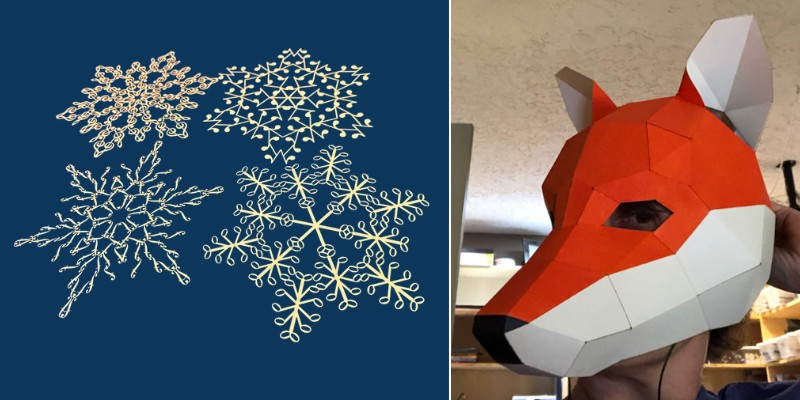
Can Lasers Cut Paper?
Yes, lasers are excellent for cutting paper and cards. Lasers cut paper very fast. Plus, laser cutting paper and cards is safer than cutting cardboard since there is much less chance of it catching fire.
Which Lasers Can Cut Paper?
Both CO2 lasers and diode lasers are suitable for laser cutting paper. A high-speed CO2 laser is the best option for laser cutting cards and paper.
Can Paper Be Laser Engraved?
Yes, lasers can also engrave paper. You need either a CO2 or diode laser to engrave paper.
Tips and Tricks For Laser Cutting and Engraving Paper and Card
Laser machines with servo steppers can cut cards and paper at tremendous speed (although ordinary lasers also can cut paper – only at lower speeds).
Furthermore, an air assist that blows concentrated air from the nozzle can press the paper against the laser tray to prevent it from curling. It is difficult to cut curled paper otherwise.
Glass
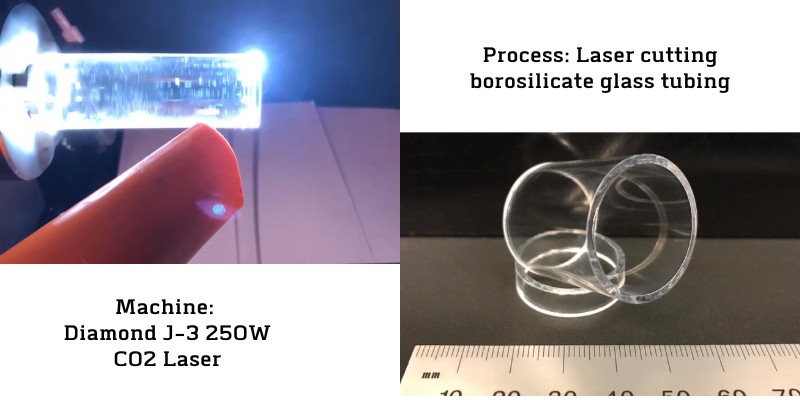
Can Lasers Cut Glass?
Yes, some lasers can cut glass. Laser cutting glass requires high power and a specific wavelength. Hence, powerful CO2 lasers with exactly 10.6 µm wavelength are most suitable for cutting glass.
Which Lasers Can Cut Glass?
Only powerful CO2 lasers (with 10.6 µm wavelength) can cut glass. Diode lasers and fiber lasers cannot laser cut glass. The power depends on the glass. For example, stained glass requires about 400W of laser power.
Can Glass Be Laser Engraved?
Yes, laser engraving glass is possible. Both CO2 and diode lasers can engrave glass, while fiber lasers are not appropriate for laser engraving glass.
You can read more in our guide to the best glass laser engraving and cutting machines.
Acrylic
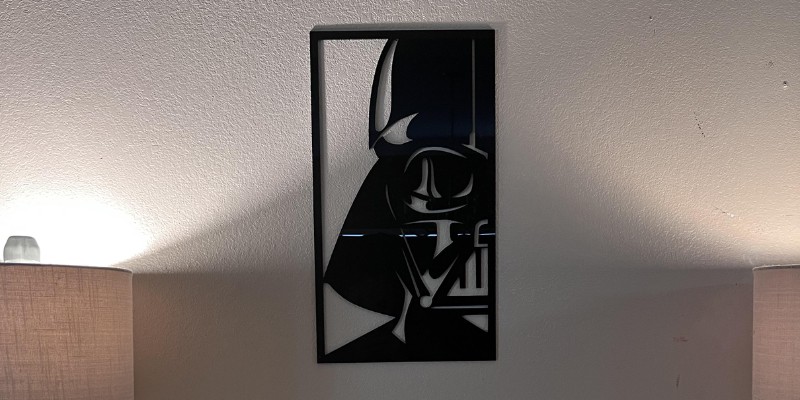
Can Lasers Cut Acrylic?
Yes, acrylic is an excellent material for laser cutting since all lasers can cut it (up to a certain thickness). Lasers cut acrylic very well, leaving a clean edge, and laser cutting acrylic is ideal for art projects due to acrylic’s unique look and properties.
Which Lasers Can Cut Acrylic?
Diode lasers, CO2 lasers, and fiber lasers can all cut acrylic. Diode lasers can cut acrylic up to ¼” in thickness, while more powerful CO2 and fiber lasers can cut thicker acrylic as well.
Can Acrylic Be Laser Engraved?
Yes, acrylic is superb for laser engraving since its engravings contrast against a transparent background as opposed to contrasting with solid colors. This makes acrylic engravings beautiful and artistic. You can use both CO2 and diode lasers to laser engrave acrylic.
You can read more in our guide to the best acrylic laser engraving and cutting machines.
Leather
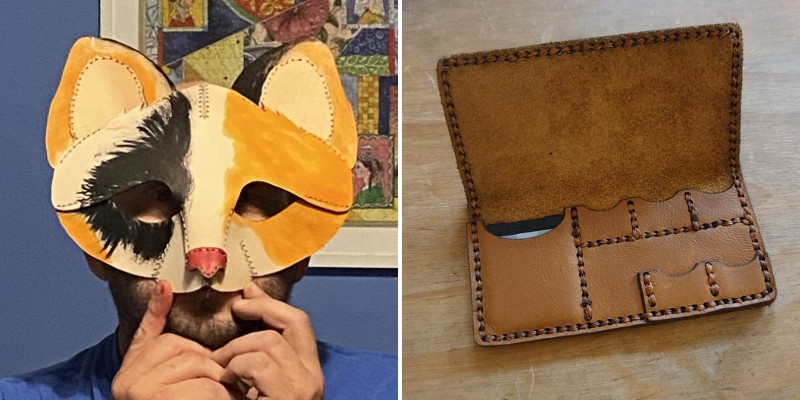
Can Lasers Cut Leather?
Yes, lasers can cut leather. However, lasers are usually reserved for cutting thinner leather, as compared to materials such as wood.
Which Lasers Can Cut Leather?
Diode lasers, CO2 lasers, and fiber lasers can all cut leather. Diode lasers can cut very thin leather (no more than ⅛” or 0.1”). A 40W CO2 laser can cut ⅛” leather.
Can Leather Be Laser Engraved?
Yes, you can laser engrave leather. Diode lasers, CO2 lasers, and fiber lasers can all engrave leather.
Foam (PE, PUR, PES, PS, PP)
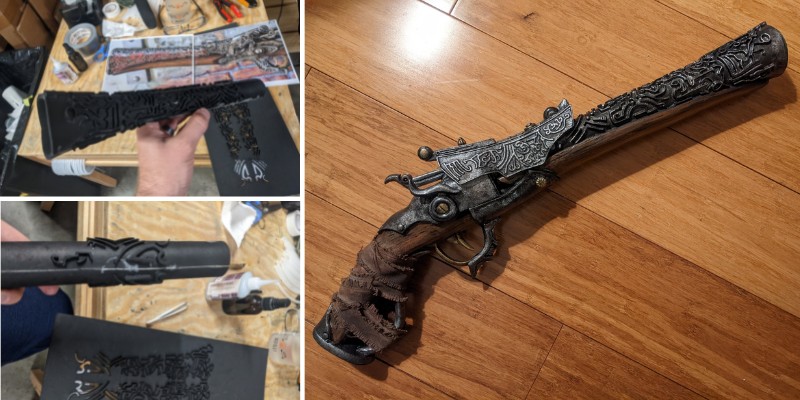
Can Lasers Cut Foam?
Yes, CO2 lasers can cut several foam types. Polyethylene foam (PE), Polyurethane foam (PUR), and Polyester foam (PES) are all safe to cut with a laser. However, you shouldn’t cut PolyStyrene or PolyPropylene foam with a laser, since they will catch fire.
Which Lasers Can Cut Foam?
Only CO2 lasers are appropriate for cutting foam – not diode or fiber lasers. You should also only cut foams that aren’t dangerous to cut, such as Polystyrene or Polypropylene (PP).
Can Foam Be Laser Engraved?
Yes, you can laser engrave insulation foams as long as they’re safe to cut. However, laser engraving foam does not create contrast. Unless you color the engraving, it will have the same color as the rest of the foam.
Tips and Tricks For Laser Cutting Foam
You should use low laser powers, since you don’t want to transfer a lot of heat to the foam. You should also use air assist to help cool down the heat and increase the cut quality.
Fabric (Cloth, Felt, Cotton)
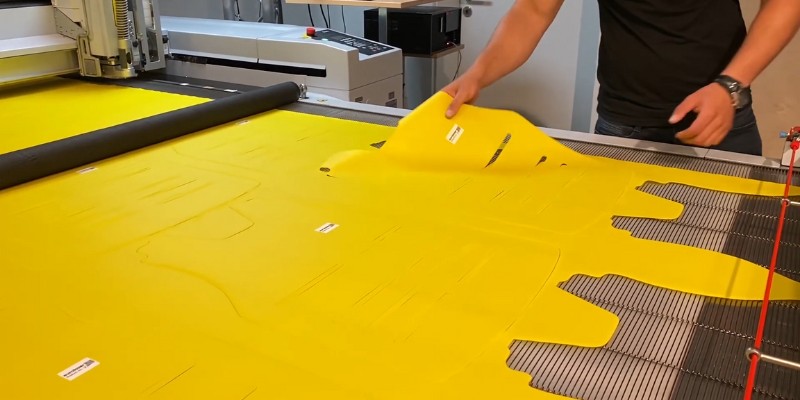
Can Lasers Cut Fabric?
Yes, CO2 lasers can cut fabric. However, you should be careful about laser cutting plastic-coated fabric since they may not be appropriate for laser cutting (depending on their substance).
Which Lasers Can Cut Fabric?
CO2 lasers and diode lasers are appropriate for laser cutting fabric, but fiber lasers are not right for fabric cutting.
Can Fabric Be Laser Engraved?
Yes, CO2 lasers can also laser engrave fabric. Laser engraving fabric is popular for creating custom designs.
Rubber
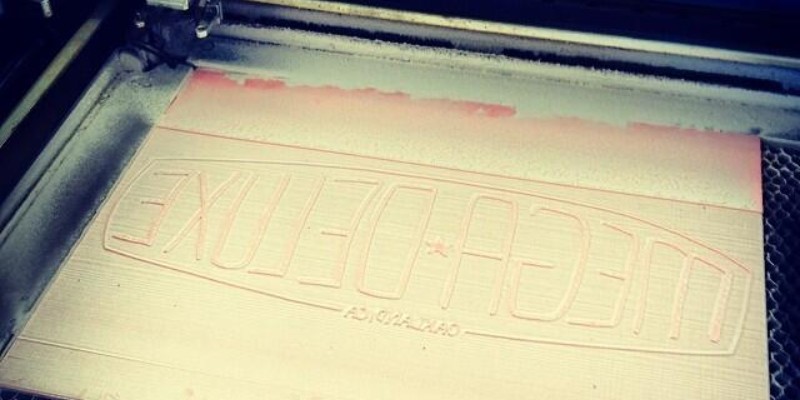
Can Lasers Cut Rubber?
Yes, cutting rubber is possible using a CO2 laser. However, you should be careful not to cut chlorine-containing rubber with your laser, as cutting rubber that has chlorine will damage your laser cutter.
Which Lasers Can Cut Rubber?
CO2 lasers are the best option for cutting rubber. Fiber lasers are less suitable as most rubbers don’t absorb their frequencies. Diode lasers can’t cut most rubbers, though they may cut some rubbers like latex sheets – but poorly.
Can Rubber Be Laser Engraved?
Yes, you can laser engrave rubber. CO2 lasers and fiber lasers can engrave rubber, while diode lasers can’t engrave rubber.
Plastics
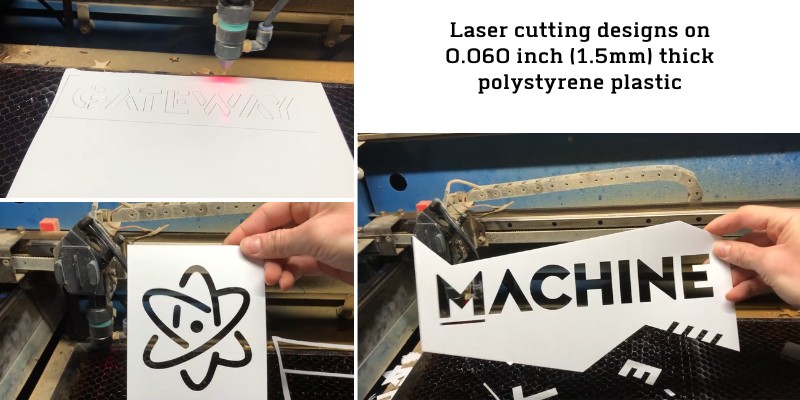
Can Lasers Cut Plastic?
Yes, lasers can cut some plastics. Acrylic, Polyethylene (PE), Polypropylene (PP), and Polyethylene Terephthalate (PETE or PET) can be cut with a laser. However, you shouldn’t laser-cut Polycarbonate (PC), Polyvinyl Chloride (PVC), and Acrylonitrile-Butadiene-Styrene (ABS).
Can Lasers Cut ABS Plastic?
No. Lasers can’t cut ABS since it melts instantly (instead of evaporating away). Plus, it may catch fire and quickly spread (unlike PVC). ABS cutting also emits unhealthy fumes when melted.
Can Lasers Cut PVC?
Yes, lasers can cut PVC pretty well (unlike ABS). However, PVC emits chlorine gas that damages the laser optics and all its metallic parts. So, while you technically can cut PVC with a laser, you shouldn’t do it.
Which Lasers Can Cut Plastic?
You can cut plastics with a CO2 laser. Plastics don’t absorb a fiber laser’s beam well, while diode lasers can’t cut plastics either.
Can Plastic Be Laser Engraved?
Yes, lasers can etch the same plastics they can cut: Acrylic (Polymethyl Methacrylate PMMA), Polyethylene (PE), Polypropylene (PP), and Polyethylene Terephthalate (PETE or PET).
While some plastics like ABS don’t engrave at all, fiber lasers can mark ABS, PVC, and most other plastics.
Steel
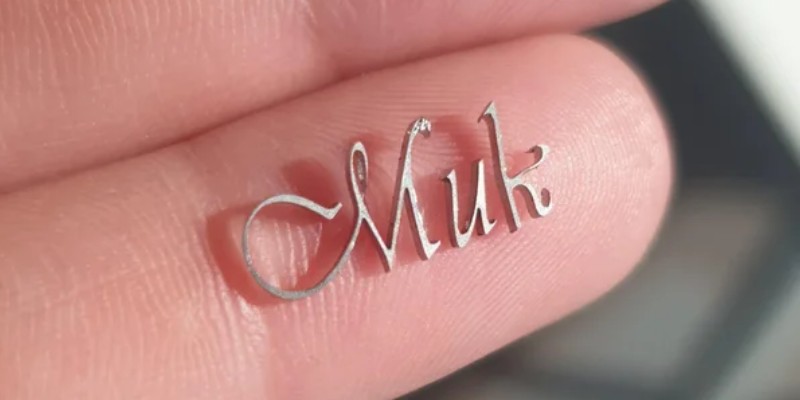
Can Lasers Cut Steel?
Yes, powerful industrial fiber lasers can cut steel. On the other hand, while CO2 and diode lasers can’t cut steel, most lasers can engrave it.
Which Lasers Can Cut Steel?
Powerful fiber lasers can cut steel. Steel reflects a CO2 laser’s beam, so CO2 lasers can’t cut steel. Diode lasers can’t cut steel, either. However, all lasers can engrave steel.
Can Steel Be Laser Engraved?
Yes, you can engrave, etch, and mark steel. Although lasers can engrave steel, engraving interferes with steel’s top layer, making it susceptible to corrosion. Therefore, marking steel is the more popular choice.
Fiber lasers can mark steel, while you can also mark in color using a MOPA fiber laser. Marking steel is the most durable tracing method.
Aluminum
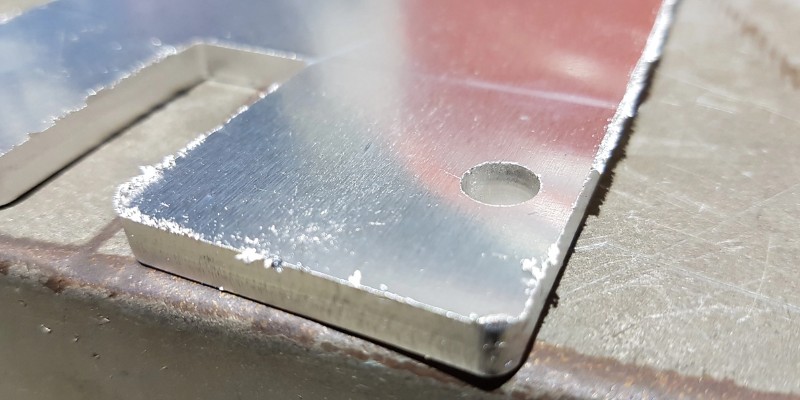
Can Lasers Cut Aluminum?
Yes. Powerful industrial fiber lasers can cut aluminum, although hobby-level lasers can’t.
Which Lasers Can Cut Aluminum?
Only fiber lasers can cut aluminum. CO2 lasers can only engrave aluminum. Diode lasers can’t even engrave bare aluminum.
Can Aluminum Be Laser Engraved?
Yes, fiber lasers and CO2 lasers can engrave aluminum. However, if the aluminum is anodized, then fiber lasers, CO2 lasers, and diode lasers can all engrave anodized aluminum.
Diode lasers will only remove the anodized layer (about 10 micrometers). CO2 lasers may penetrate slightly deeper than the anodized layer, whilefiber lasers can engrave deepest.
Other Metals: Gold, Silver, Bronze, Brass, Copper, Tungsten, Chrome, and Nickel
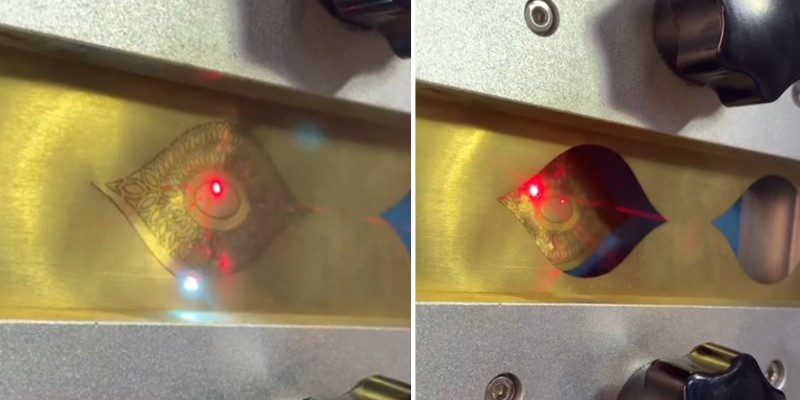
Can Lasers Cut Gold, Silver, Bronze, Brass, Copper, Tungsten, Chrome, and Nickel?
Yes, Lasers can cut metal sheets. However, laser cutting thick metal cylinders isn’t practical.
Which Lasers Can Cut Gold, Silver, Bronze, Brass, Copper, Tungsten, Chrome, and Nickel?
Only Fiber lasers can cut metal sheets. However, cutting 3mm thick metal requires several hundred watts of laser power. So, 30W hobby-level fiber lasers won’t cut metal sheets.
Can Gold, Silver, Bronze, Brass, Copper, and Nickel Be Laser Engraved?
Yes, you can cut as well as engrave metal sheets. However, CO2 lasers can’t engrave gold, silver, bronze, brass, copper, tungsten, chrome, and nickel, although they can engrave aluminum and steel. Only fiber lasers can engrave these metals.
Fiberglass
Can Lasers Cut Fiberglass?
Yes, some lasers can cut fiberglass. While many claim that you can’t and shouldn’t cut fiberglass, some CO2 lasers can cut fiberglass under the right conditions.
The first claim is that lasers can’t cut fiberglass since fiberglass contains glass and epoxy resin. CO2 lasers can’t cut through the epoxy resin, while fiber lasers can’t cut through the glass.
However, CO2 lasers with wavelengths of 9.3 μm or 10.6 μm can cut fiberglass according to Universal Laser Systems. You can also see in the video below that a Boss Laser (with a wavelength of 10.6 μm) is cutting fiberglass.
The second claim is that fiberglass emits dangerous fumes. This is true since the epoxy resin in fiberglass contains chloride. However, cutting fiberglass emits less chloride than cutting PVC since chloride contributes much less to fiberglass’ molecular mass than PVC.
Therefore, you can laser cut thin fiberglass with air assist and proper ventilation.
Which Lasers Can Cut Fiberglass?
Only CO2 lasers with 9.3 μm or 10.6 μm wavelengths can cut fiberglass. They need air assist and ventilation since cutting fiberglass emits dangerous fumes.
Can Fiberglass Be Laser Engraved?
Yes, lasers can mark and engrave fiberglass. Marking fiberglass carbonizes the surface and gives clean black marks with high contrast. However, engraving fiberglass discolors it. Therefore, marking fiberglass is preferable.
Tips and Tricks For Laser Cutting and Engraving Fiberglass
Lasers burn fiberglass’s edges when cutting it since the laser carbonizes the cutting edges. However, a solvent can clean off these burnt edges.
Materials You Can Engrave But Not Cut
Some materials don’t suit cutting with a laser. For some, a CNC machine can work better for cutting. However, even if they can’t cut them, lasers can engrave some of these materials pretty well.
Below we’ll inspect these materials:
Laser Engraving Stone, Brick, and Ceramic
Although you can’t cut stone with a laser, you can create detailed engravings on stone. You can laser engrave granite, marble, pebble, slate, agate, brick, and ceramic.
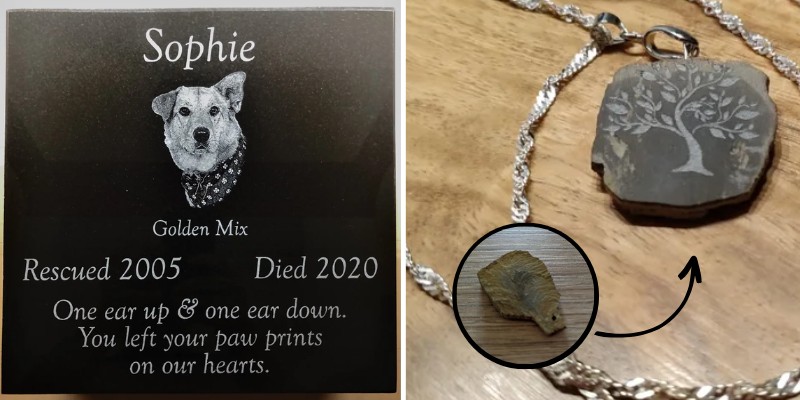
The laser discolors the spots it targets. Therefore, dark stones are best for laser engraving. For example, you can create a detailed black-and-white image on dark granite.
On the other hand, you may achieve black marks on white stones with the right laser setting.
Which Lasers Can Engrave Stone, Brick, and Ceramic?
Most lasers can engrave stone. CO2 and fiber lasers give a matte finish to stone, ceramics, and brick. However, diode lasers can also engrave some stones.
Bones

You can engrave bones with a laser, although you can’t cut them. CO2 lasers are the best choice for engraving bones.
Coated Metals (Without a Fiber Laser)
A fiber laser can cut and engrave metal sheets. However, CO2 and diode lasers can also engrave coated or painted metals, even though they can’t cut metals.
Materials You Shouldn’t Cut With a Laser
You shouldn’t cut some plastics, such as ABS, PVC, and Polycarbonate, and some foams including PolyStyrene and PolyPropylene foam. Also, be careful about cutting fiberglass due to its fumes, and cardboard as it can be a fire hazard.
Summary
Laser cutters can cut many materials, depending on the laser type. Plus, lasers can engrave more materials than they can cut.
Fiber lasers can cut metal sheets, wood, acrylic, and leather. Fiber lasers can also mark some metals and plastics. MOPA fiber lasers can even color-mark some metals.
CO2 lasers can’t cut metals though they can engrave a few. However, CO2 lasers can cut some plastics, wood, acrylic, some foams, glass, and maybe fiberglass.
Diode lasers can cut wood, acrylic, and leather, although they can engrave many more materials.
Related articles:
- Full Guide: Laser Engraving & Etching Anodized Aluminum
- How To Laser Etch Metal
- Is xTool D1 Pro 20W The Best Desktop Diode Laser? [Review]
- Best Wood Laser Cutting Machines
- Best Metal Laser Engraving Machines
- Top Rated Free & Paid Laser Engraving & Cutter Software
- Free Laser Cut Files & Which Sites To Find Them Today
- Unique Laser Engraved & Laser Cut Gifts You Can Give Away or Sell
- Amazing Project Ideas: Laser Engraving & Cutting You Can Make Now


















